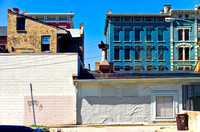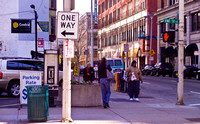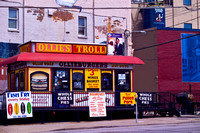Created 4-Apr-09
Modified 3-Jun-20
Intended as a studio camera to be used with high-key flash, the Kodak DCS 14n was and remains one of the sharpest digital SLRs ever made, thanks in part to the fact that Kodak omitted an anti-aliasing filter to achieve maximum resolution from its 14Mp full-frame sensor. Unfortunately, as it did in the Leica M8, this little omission caused as many problems as it fixed. Not a great camera in low light and miserable in really low light and incapable of really long exposures, the 14n remains a paragon in medium-to-bright light. These photos were doctored in LightRoom to achieve the saturation of transparency film. I'll leave it up to you to decide how successfully this has been accomplished. There is no question that 35mm digital cameras--or at least this 35mm digital camera--are slightly higher in the resolution of certain kinds of fine detail than 35mm film cameras (or, rather, film that has been digitally scanned). Dynamic range and color and the sheer beauty and plasticity of light are separate issues. Judge for yourself.
© Jonathan Valin





















